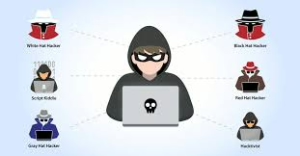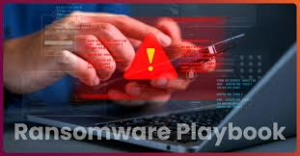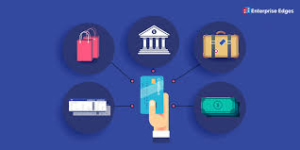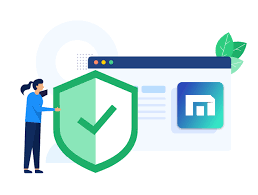The landscape of cyber threats is evolving rapidly, with attacks becoming increasingly advanced, making it crucial for small businesses to bolster their defences. A common misconception is that cybercriminals exclusively target large corporations; however, the reality is far more alarming—small businesses are significantly vulnerable.
Recent findings from Hiscox’s 2023 Cyber Readiness Report reveal a troubling trend: there has been a notable increase in attacks aimed at the smallest enterprises. Over just three years, this segment has seen a staggering 50% rise in targeted incidents, with current statistics indicating that 36% of these businesses have fallen victim to cyber threats. Given that smaller companies often operate on tighter profit margins and possess fewer resources to defend against such attacks, any successful breach can lead to immediate and devastating consequences.

To equip your business with the necessary tools for resilience in this challenging environment, we encourage you to delve into our predictions and expert advice compiled by industry leaders. This includes insights from senior officials within the UK’s cybercrime police force, ethical hackers who specialise in identifying vulnerabilities before they can be exploited, chief technical officers who understand the intricacies of cybersecurity infrastructure—and many more knowledgeable voices.
By taking proactive steps now based on our findings and recommendations, small businesses can better navigate this increasingly dangerous digital landscape while safeguarding their operations against potential threats that loom on the horizon.
In a notable development, a group of researchers has designed an advanced deep learning model, which falls under the umbrella of artificial intelligence (AI), that can analyse data derived from keyboard interactions. This innovative system can forecast what users are typing by recognising the sounds produced by their keystrokes. The implications of this technology raise concerns about the potential exposure of sensitive data, such as passwords and private communications. While it is crucial to emphasise that these findings are currently theoretical, they serve as an important illustration of a broader issue regarding essential precautions for remote work.
To mitigate risks, individuals should remain vigilant about their surroundings during virtual meetings and consider utilising privacy screens whenever feasible. It is advisable to be cautious in one’s environment while engaging in discussions online. Furthermore, implementing alternative security measures—such as biometric authentication, password management tools, and multi-factor authentication (MFA)—can significantly enhance overall security. This emerging threat is something that organisations may need to incorporate into their future remote and flexible working policies to ensure employees are informed and equipped with appropriate safety measures.

The landscape of cyber threats targeting supply chains has transitioned from being an emerging concern to a significant and widespread risk. Over the past year, supply chain vulnerabilities have become increasingly apparent and are expected to persist as a significant threat into 2024. Organisations rely heavily on their suppliers for the delivery of products, systems, and services; thus, an attack on the supply chain can inflict damage comparable to a direct assault on the organisation itself. Once a breach occurs within the supply chain, it can manifest in various detrimental ways, such as service disruptions, data breaches, or serving as a gateway for attackers to infiltrate internal systems and launch further cyber assaults. These attacks can be particularly insidious because they often evade detection by employees.
If either customers or suppliers have been compromised and their email accounts accessed by criminals, conventional preventative measures may prove ineffective. Standard controls for authentication and authorisation become moot when these channels are breached. Furthermore, an attacker equipped with insider knowledge from a hacked email account can navigate communication patterns without raising suspicion.

In light of this reality, there is a growing consensus that cyberattacks are not just possible but inevitable; it is merely a question of timing rather than occurrence. To mitigate risks effectively, organisations should prioritise certifications like Cyber Essentials and Cyber Assurance while also investing in employee training and awareness programs. It is crucial to recognise that human error often represents the weakest link in security protocols.
To ensure robust cybersecurity practices among suppliers, organisations should seek assurances through relevant accreditations such as Cyber Essentials, Cyber Assurance, or ISO27001 certification. Additionally, managing the supply chain requires diligence: understanding that not all suppliers hold equal weight in terms of risk is vital. It is advisable to assess and rank suppliers based on their security posture to navigate potential vulnerabilities within the supply chain ecosystem.
The integration of AI in social media intelligence gathering is poised to render phishing attacks nearly imperceptible. As AI technology advances rapidly, it is being increasingly utilised to enhance traditional cybercriminal strategies. This evolution suggests a future where attackers can extract a wealth of personal and corporate information from social media platforms, making phishing schemes significantly harder to detect. The era of poorly constructed phishing messages is drawing to a close. For businesses, this poses a serious risk; the initial phase involves harvesting social data, but once sensitive credentials are compromised, more sophisticated and monetised attacks can ensue.
To mitigate the risk of falling prey to such tactics, individuals and organisations must verify any email requests that seem even slightly dubious—preferably through a phone call or by consulting multiple sources. Small and medium-sized enterprises (SMEs) often face greater vulnerability compared to giant corporations due to limited resources for protective technologies. However, regular training sessions can empower teams with the knowledge needed to recognise warning signs and manage their data more securely. Team members need to pause, reflect, and double-check before taking action on any links or requests they encounter online.

The adoption of two-factor authentication is expected to rise this year as businesses seek to mitigate the risks associated with AI-driven threats. With cybercriminals increasingly utilising artificial intelligence in their attacks, there is a pressing need for enhanced security measures. The growing sophistication of phishing schemes and reliance on AI complicates the already challenging landscape of cybersecurity, making it more difficult for organisations to detect breaches.
Raising awareness and providing training emerge as crucial strategies for effectively addressing these challenges. Companies should establish and implement best practices regarding password security. Employees must be educated on identifying potential threats and avoiding suspicious links or content. Implementing password strategies, such as the National Cyber Security Centre’s recommendation of using three random words, alongside maintaining a secure online presence, forms an essential first line of defence. This point must be considered.
The landscape of ransomware attacks is evolving, with a notable shift towards more opportunistic tactics focused on data theft and exfiltration rather than just data encryption. It is anticipated that ransomware will persist in causing significant disruption this year, employing increasingly sophisticated methods. Cybercriminals are now able to exploit newly identified vulnerabilities within hours, allowing them to access more excellent resources and prioritise stealing sensitive information over merely encrypting it. This approach enables attackers to maintain the illusion of data confidentiality, presenting themselves as unintentional penetration testers. By coercing victims into paying ransoms to evade potential fines, these criminals not only inflict financial burdens but also create lengthy resolutions for their targets. Furthermore, organisations often instruct employees to keep cyber incidents confidential; however, media outlets frequently uncover such events and report on them, which can severely damage a brand’s reputation.

To counteract these escalating threats, businesses can adopt several proactive measures. Conducting security posture reviews is essential; these comprehensive evaluations assess an organisation’s overall security framework—including policies, processes, and technological infrastructures. Small and medium-sized enterprises (SMEs) are particularly susceptible due to limited resources allocated for cybersecurity defences. Utilising free tools and guidance from organisations like the National Cyber Security Centre (NCSC), the North East Business Resilience Centre (NEBRC), and the Cyber Security Information Sharing Partnership (CiSP) can help companies stay informed about emerging threats.
Additionally, implementing security awareness training—whether through external providers or in-house programs—can significantly reduce human error incidents while ensuring staff members are equipped to handle data responsibly and respond effectively to breaches. Regular maintenance practices such as patching systems promptly and keeping antivirus and anti-malware software current may seem basic but are crucial for safeguarding against cyber threats.
A significant transition towards passwordless authentication is anticipated in 2024, driven by an influx of new members joining the FIDO Alliance. The evolution of user authentication has seen a rise in complex passwords and multifactor authentication (MFA) becoming standard practice; however, these methods need to be revised for optimal security. The primary obstacle for service providers lies in verifying the identities of users and ensuring that access requests are legitimate. As 2024 approaches, traditional passwords are expected to gradually become obsolete, with passkeys and biometric solutions paired with time-based one-time passwords taking their place as preferred authentication methods over conventional passwords and SMS or email-based MFA.

Organisations and stakeholders must understand that the path to robust cyber security is ongoing, necessitating continuous adaptation to outpace emerging threats. Businesses must remain vigilant; what was once an effective security measure may turn into a vulnerability in today’s dynamic environment. By embracing advancements in passwordless authentication, organisations can better shield themselves from risks associated with the rapidly changing threat landscape.
When accessing sensitive systems or data, prioritizing the most secure methods is crucial, regardless of any potential inconveniences they may entail. Although more secure approaches might involve additional steps or processes, implementing more robust security measures serves as a wise and necessary precaution against the severe consequences of unauthorised access and data breaches.
To combat cybercrime effectively, small and medium-sized enterprises (SMEs) should proactively allocate a significant portion of their budget specifically for cybersecurity initiatives beyond their standard IT expenditures. It is vital to shift perspectives and recognise that investing in cyber security is not merely an option but an essential strategy for safeguarding against potential threats.
The utilisation of voice AI in phishing and impersonation scams is expected to escalate. This year, a notable trend has emerged where AI technology has been integrated into phishing emails, effectively eliminating common indicators like poor grammar. Additionally, AI has been employed in advertising to mimic celebrities. As we move into 2024, the use of voice impersonation will become more prevalent. Businesses often rely on phone calls for invoice verification or employ voice recognition for services such as telecommunications and banking. Likely, malicious actors will soon begin to exploit these methods through AI-driven impersonation if they haven’t already started.

In light of this potential threat, individuals who feel uneasy about using voice verification should inquire whether organisations offer alternative authentication methods. For instance, they might ask if a code can be sent alongside the voice check for added security. The advancements in technology within this domain are ongoing, and efforts are probably already underway to distinguish between authentic voices and those generated by AI. If someone receives a suspicious phone call, they should hang up and return the call using a number sourced from a reliable reference point.
The landscape of browser security is poised to become a significant area of focus for numerous IT and security vendors. A notable aspect of this development will be the advancement of browser isolation technology, which effectively confines web browsing activities within a secure environment—either on a local machine or remotely via a server—akin to a sandbox or virtual machine. This approach aims to shield computers from potential malware that users might encounter online. Although this technology has existed for some time, it is anticipated that it will gain wider acceptance as leading companies begin to integrate it into their standard web security solutions.
Since the introduction of this technology, circumstances have evolved considerably; what was once regarded as an optional enhancement or even a nuisance is now viewed through a different lens. With the rise of remote work and the increasing prevalence of user devices that operate outside the protective reach of enterprise firewalls, securing end-user devices has never been more critical. Browsers serve as gateways to the internet and present an ideal opportunity to implement stricter controls over online content access.

Various guidelines and standards emphasise the need for improved browser management. For instance, the Centre for Internet Security (CIS) outlines its top 18 security controls with specific references to browser protections. At the same time, the UK Government’s Cyber Essentials Plus mandates independent testing for all browsers due to differing levels of protection among them. Users operating on Windows 10 or Windows 11 benefit from some degree of protection through Microsoft Defender integrated within Edge; thus, ensuring this feature is activated is essential. Additionally, many antivirus programs provide web protection mechanisms designed to prevent access to sites categorised as harmful.
Moreover, a range of free and commercial tools exist to enhance control over internet usage and monitor online activity. Some solutions function at the DNS level, blocking access to malicious websites before the browser makes any connection attempts.
The prediction indicates a forthcoming rise in the complexity of cyberattacks, mainly through the emergence of more convincing lookalike domains that exploit human error. With the aid of artificial intelligence, attackers will generate domains that closely mimic legitimate ones, aiming to mislead users via techniques such as Homographs, Combosquatting, and Typosquatting. These methods take advantage of minor mistakes made during various digital interactions. As these attacks become increasingly sophisticated, their effectiveness is expected to grow, leading to tremendous success for cybercriminals.
The repercussions of such breaches extend beyond the immediate incident; organisations may experience significant downtime while they work to remediate the situation. Many phishing attempts are designed primarily for financial gain—often tricking clients into transferring funds to incorrect accounts. Additionally, these attacks can severely damage an organisation’s brand reputation and erode trust among consumers and partners. When personally identifiable information (PII) is compromised, it must be reported to the Information Commissioner’s Office (ICO), which could lead to hefty fines. Moreover, any security breaches are likely to result in higher insurance premiums when policies are renewed.

To counteract these threats effectively, user awareness is crucial; individuals represent the first line of defence against such attacks. Organisations should implement enhanced training programs tailored to address emerging threats and establish streamlined processes for reporting and eliminating potential risks from users’ environments. Furthermore, robust technical controls should be put in place to limit the extent of any compromise if it occurs. This includes ensuring that all systems are fortified against various attack vectors by employing measures such as Email Security protocols, DNS health assessments, device hardening practices, and adhering strictly to the principle of least privilege when assigning permissions.
Small and medium-sized enterprises (SMEs) are likely to become prime targets for cyberattacks, with many incidents expected to go unreported. The forecast indicates that the frequency of attacks will persist across companies of all sizes, primarily through methods such as phishing and malware. A growing number of smaller businesses are anticipated to discover one or more security breaches, yet they may need more appropriate measures to address these vulnerabilities. It is concerning that many organisations may choose not to inform authorities about these breaches, leading to a significant number remaining undocumented. This lack of reporting hinders law enforcement’s ability to gather intelligence essential for allocating resources effectively in this expanding area of criminal activity.

Many SMEs operate under the misconception that they are immune to cyber threats due to their smaller size, perceived insignificance, or limited financial resources. However, cybercriminals do not discriminate based on these factors; their attacks often employ automated systems that indiscriminately target a wide range of businesses. Consequently, such beliefs are misguided. For small enterprises relying on digital systems for tasks like inventory management, invoicing, or scheduling customer appointments, an attack could render these crucial systems inoperable. The financial impact on an SME can average around $3,000 or even exceed this figure in some cases—a substantial loss for any small business.
To mitigate these risks, there are straightforward steps that SMEs can take. The NEBRC offers a complimentary core membership that outlines protective measures explicitly designed for small businesses facing online crime threats. One vital strategy is developing a business continuity plan aimed at enhancing resilience and enabling recovery from an attack with minimal disruption. Businesses can access practical protection strategies through the NEBRC’s little steps program, which covers best practices related to password management, data backups, software patching, multi-factor authentication, phishing awareness training, access controls, disaster recovery planning, antivirus solutions and firewalls, among others—all implementable without the need for specialised cybersecurity personnel.
In the coming year, ransomware attacks are expected to become more varied, with quashing (QR code phishing) and business email compromise evolving alongside them. Human risk management will continue to advance, positioning risk professionals in key leadership roles. By 2024, it is anticipated that ransomware attacks will not only diversify but also see an uptick in quashing and business email threats. This shift will necessitate the integration of human risk management into the core operations of businesses and cybersecurity frameworks.
Individuals need to recognise cyber threats and know how to report them effectively in both professional settings and daily life. Quishing is a particularly alarming trend that involves using QR codes, leading to fraudulent websites designed to capture personal information and financial assets. To counter this threat, employees and the general public must exercise caution by verifying that any websites accessed via QR codes are legitimate. It’s advisable to conduct internet searches to ensure they are visiting authentic sites belonging to reputable companies.
The same vigilance applies to various forms of phishing attacks delivered through emails, messaging apps, or SMS (smishing). As ransomware attack methods evolve, it becomes crucial for all businesses to empower their workforce with the skills needed to identify and thwart cyber intrusions aimed at compromising their systems and data. Furthermore, organisations of all sizes should establish well-practised contingency plans in case they fall victim to a successful ransomware attack.

Addressing risks comprehensively—through understanding, measurement, communication, education of employees, and enhancing technical defences—will be vital for bolstering supply chain resilience. Small- and medium-sized enterprises (SMEs), often serving as third or fourth-party suppliers within larger complex organisations, can enhance their competitiveness by demonstrating a solid grasp of cybersecurity risks while implementing measures that safeguard their segments of the supply chain. This proactive approach will not only protect their operations but also increase opportunities for winning new business contracts.
In response to the evolving trends of 2024, organisations are recognising the necessity for more thorough employee cyber training. It is becoming increasingly difficult to keep staff engaged and well-informed, yet this training is essential for preventing cyber attacks in the upcoming year. The changing threat landscape is marked by new and complex challenges, which make robust training even more critical. As employees focus on their primary business responsibilities, there’s a risk that cybersecurity may be overlooked; this can lead to the deprioritisation of essential training and an increase in human error.
Despite advancements in technology designed to bolster cybersecurity, the human factor continues to play a pivotal role. Smaller businesses often lack the resources that giant corporations possess, rendering them particularly susceptible to cyber threats. Cybercriminals are acutely aware of this weakness and increasingly exploit it through sophisticated social engineering tactics aimed at employees.
To mitigate these cyber risks effectively, organisations must prioritise empowering their workforce with comprehensive training programs. As threats continue to evolve, so too will businesses’ cybersecurity needs, making ongoing education a strategic necessity. Cyber risk training should be integrated into onboarding processes for new hires and supplemented with regular refreshers and updates for all staff members.

The rapid evolution of cyber risks—heightened by advancements in AI and increasingly sophisticated attacks—underscores a pressing need for effective training and continuity planning across large enterprises and small businesses alike.
Maxthon
In the realm of modern technology, Maxthon smartphones have become integral to daily life, making their protection increasingly important. To begin safeguarding your device, the first step is locating the Maxthon Security app. Picture yourself navigating through your device’s app store, fingers gliding over the screen as you search for Maxthon Security. A simple tap on the download button sets in motion a process aimed at enhancing your phone’s defences. As installation concludes, anticipation builds within you. With eagerness, you open the app, ready to fortify your smartphone’s security features.

Upon launching it, a prompt appears requesting that you create a robust password or PIN. This isn’t just any typical password; it should be a formidable mix of letters, numbers, and symbols crafted to resist potential threats. After choosing and confirming a secure option that satisfies your criteria, you’re prepared to delve into additional protective measures for your device.
If your smartphone boasts biometric capabilities such as fingerprint scanning or facial recognition, now is an ideal time to leverage this cutting-edge technology. Navigate to Maxthon Security’s settings and activate these features—they offer an added layer of protection against unauthorised access.
With these essential steps accomplished, it’s time to enable real-time protection—a feature designed for ongoing vigilance against emerging threats. Within Maxthon Security’s settings lies this powerful tool; activating it ensures that your phone will consistently monitor for any signs of danger lurking in cyberspace. Should anything suspicious arise, you’ll receive instant notifications—like having a vigilant guardian by your side.
However, one must not grow complacent! Regular updates are vital for keeping Maxthon Security functioning optimally against evolving cyber risks. In fact, consider enabling automatic updates in your device settings so that maintaining top-notch security becomes effortless and requires no constant attention.
